- Home
- Robert J. Sawyer
Calculating God Page 2
Calculating God Read online
Page 2
The alien didn’t seem the least bit alarmed by the presence of me or the other people in the Rotunda, although its torso was bobbing up and down slightly in what I hoped wasn’t a territorial display. Indeed, it was almost hypnotic: the torso slowly lifting and dropping as the six legs flexed and relaxed, and the eyestalks drifting together, then apart. I hadn’t seen the video of the creature’s exchange with Raghubir yet; I thought that perhaps the dance was an attempt at communication—a language of body movements. I considered flexing my own knees and even, in a trick I’d mastered at summer camp forty-odd years ago, crossing and uncrossing my eyes. But the security cameras were on us both; if my guess was wrong, I’d look like an idiot on news programs around the world. Still, I needed to try something. I raised my right hand, palm out, in a salute of greeting.
The creature immediately copied the gesture, bending an arm at one of its two joints and splaying out the six digits at the end of it. And then something incredible happened. A vertical slit opened on the upper segment of each of the two front-most legs, and from the slit on the left came the syllable “hell” and from the one on the right, in a slightly deeper voice, came the syllable “oh.”
I felt my jaw dropping, and a moment later my hand dropped as well.
The alien continued to bob with its torso and weave with its eyes. It tried again: from the left-front leg came the syllable “bon,” and from the right-front came “jour.”
That was a reasonable guess. Much of the museum’s signage is bilingual, both English and French. I shook my head slightly in disbelief, then began to open my mouth—not that I had any idea what I would say—but closed it when the creature spoke once more. The syllables alternated again between the left mouth and the right one, like the ball in a Ping-Pong match: “Auf” “Wie” “der” “sehen.”
And suddenly words did tumble out of me: “Actually, auf Wiedersehen means goodbye, not hello.”
“Oh,” said the alien. It lifted two of its other legs in what might have been a shrug, then continued on in syllables bouncing left and right. “Well, German is not my first language.”
I was too surprised to laugh, but I did feel myself relaxing, at least a little, although my heart still felt as though it were going to burst through my chest. “You’re an alien,” I said. Ten years of university to become Master of the Bleeding Obvious…
“That is correct,” said the leg-mouths. The being’s voices sounded masculine, although only the right one was truly bass. “But why be generic? My race is called Forhilnor, and my personal name is Hollus.”
“Um, pleased to meet you,” I said.
The eyes weaved back and forth expectantly.
“Oh, sorry. I’m human.”
“Yes, I know. Homo sapiens, as you scientists might say. But your personal name is…?”
“Jericho. Thomas Jericho.”
“Is it permissible to abbreviate ‘Thomas’ to ‘Tom’?”
I was startled. “How do you know about human names? And—hell—how do you know English?”
“I have been studying your world; that is why I am here.”
“You’re an explorer?”
The eyestalks moved closer to each other, then held their position there. “Not exactly,” said Hollus.
“Then what? You’re not—you’re not an invader are you?”
The eyestalks rippled in an S-shaped motion. Laughter? “No.” And the two arms spread wide. “Forgive me, but you possess little my associates or I might desire.” Hollus paused, as if thinking. Then he made a twirling gesture with one of his hands, as though motioning for me to turn around. “Of course, if you want, I could give you an anal probe…”
There were gasps from the small crowd that had assembled in the lobby. I tried to raise my nonexistent eyebrows.
Hollus’s eyestalks did their S-ripple again. “Sorry—just kidding. You humans do have some crazy mythology about extraterrestrial visitations. Honestly, I will not hurt you—or your cattle, for that matter.”
“Thank you,” I said. “Um, you said you weren’t exactly an explorer.”
“No.”
“And you’re not an invader.”
“Nope.”
“Then what are you? A tourist?”
“Hardly. I am a scientist.”
“And you want to see me?” I asked.
“You are a paleontologist?”
I nodded, then, realizing the being might not understand a nod, I said, “Yes. A dinosaurian paleontologist, to be precise; theropods are my specialty.”
“Then, yes, I want to see you.”
“Why?”
“Is there someplace private where we can speak?” asked Hollus, his eyestalks swiveling to take in all those who had gathered around us.
“Umm, yes,” I said. “Of course.” I was stunned by it all as I led him back into the museum. An alien—an actual, honest-to-God alien. It was amazing, utterly amazing.
We passed the paired stairwells, each wrapped around a giant totem pole, the Nisga’a on the right rising eighty feet—sorry, twenty-five meters—all the way from the basement to the skylights atop the third floor, and the shorter Haida on the left starting on this floor. We then went through the Currelly Gallery, with its simplistic orientation displays, all sizzle and no steak. This was a weekday in April; the museum wasn’t crowded, and fortunately we didn’t pass any student groups on our way back to the Curatorial Centre. Still, visitors and security officers turned to stare, and some uttered various sounds as Hollus and I passed.
The Royal Ontario Museum opened almost ninety years ago. It is Canada’s largest museum and one of only a handful of major multidisciplinary museums in the world. As the limestone carvings flanking the entrance Hollus had come through a few minutes before proclaim, its job is to preserve “the record of Nature through countless ages” and “the arts of Man through all the years.” The ROM has galleries devoted to paleontology, ornithology, mammalogy, herpetology, textiles, Egyptology, Greco-Roman archaeology, Chinese artifacts, Byzantine art, and more. The building had long been H-shaped, but the two courtyards had been filled in during 1982, with six stories of new galleries in the northern one, and the nine-story Curatorial Centre in the southern. Parts of walls that used to be outside are now indoors, and the ornate Victorian-style stone of the original building abuts the simple yellow stone of the more recent additions; it could have turned out a mess, but it’s actually quite beautiful.
My hands were shaking with excitement as we reached the elevators and headed up to the paleobiology department; the ROM used to have separate invertebrate and vertebrate paleontology departments, but Mike Harris’s cutbacks had forced us to consolidate. Dinosaurs brought more visitors to the ROM than did trilobites, so Jonesy, the senior invertebrate curator, now worked under me.
Fortunately, no one was in the corridor when we came out of the elevator. I hustled Hollus into my office, closed the door, and sat down behind my desk—although I was no longer frightened, I was still none too steady on my feet.
Hollus spotted the Troödon skull on my desktop. He moved closer and gently picked it up with one of his hands, bringing it to his eyestalks. They stopped weaving back and forth, and locked steadily on the object. While he examined the skull, I took another good look at him.
His torso was no bigger around than the circle I could make with my arms. As I noted earlier, the torso was covered by a long strip of blue cloth. But his hide was visible on the six legs and two arms. It looked a bit like bubble wrap, although the individual domes were of varying sizes. But they did seem to be air filled, meaning they were likely a source of insulation. That implied Hollus was endothermic; terrestrial mammals and birds use hairs or feathers to trap air next to their skin for insulation, but they could also release that air for cooling by having their hair stand on end or by ruffling their feathers. I wondered how bubble-wrap skin could be used to effect cooling; maybe the bubbles could deflate.
“A” “fascinating” “skull,” said Hollus,
now alternating whole words between his mouths. “How” “old” “is” “it?”
“About seventy million years,” I said.
“Precisely” “the” “sort” “of” “thing” “I” “have” “come” “to” “see.”
“You said you’re a scientist. You are a paleontologist, like me?”
“Only in part,” said the alien. “My original field was cosmology, but in recent years my studies have moved on to larger matters.” He paused for a moment. “As you have probably gathered by this point, my colleagues and I have observed your Earth for some time—enough to absorb your principal languages and to make a study of your various cultures from your television and radio. It has been a frustrating process. I know more about your popular music and food-preparation technology than I ever cared to—although I am intrigued by the Popeil Automatic Pasta Maker. I have also seen enough sporting events to last me a lifetime. But information on scientific matters has been very hard to find; you devote little bandwidth to detailed discussions in these areas. I feel as though I know a disproportionate amount about some specific topics and nothing at all about others.” He paused. “There is information we simply cannot acquire on our own by listening in to your media or through our own secret visits to your planet’s surface. This is particularly true about scarce items, such as fossils.”
I was getting a bit of a headache as his voice bounced from mouth to mouth. “So you want to look at our specimens here at the ROM?”
“Exactly,” said the alien. “It was easy for us to study your contemporary flora and fauna without revealing ourselves to humanity, but, as you know, well-preserved fossils are quite rare. The best way to satisfy our curiosity about the evolution of life on this world seemed to be by asking to see an existing collection of fossils. No need to reinvent the lever, so to speak.”
I was still flabbergasted by this whole thing, but there seemed no reason to be uncooperative. “You’re welcome to look at our specimens, of course; visiting scholars come here all the time. Is there any particular area you’re interested in?”
“Yes,” said the alien. “I am intrigued by mass extinctions as turning points in the evolution of life. What can you tell me about such things?”
I shrugged a little; that was a big topic. “There’ve been five mass extinctions in Earth’s history that we know of. The first was at the end of the Ordovician, maybe 440 million years ago. The second was in the late Devonian, something like 365 million years ago. The third, and by far the largest, was at the end of the Permian, 225 million years ago.”
Hollus moved his eyestalks so that his two eyes briefly touched, the crystalline coatings making a soft clicking sound as they did so. “Say” “more” “about” “that” “one.”
“During it,” I said, “perhaps ninety-six percent of all marine species disappeared, and three-quarters of all terrestrial vertebrate families died out. We had another mass extinction late in the Triassic Period, about 210 million years ago. We lost about a quarter of all families then, including all labyrinthodonts; it was probably crucial to the dinosaurs—creatures like that guy you’re holding—coming into ascendancy.”
“Yes,” said Hollus. “Continue.”
“Well, and the most-famous mass extinction happened sixty-five million years ago, at the end of the Cretaceous.” I indicated the Troödon skull again. “That’s when all the dinosaurs, pterosaurs, mosasaurs, ammonites, and others died out.”
“This creature would have been rather small,” said Hollus, hefting the skull.
“True. From snout to tip of tail, no more than five feet. A meter and a half.”
“Did it have larger relatives?”
“Oh, yes. The largest land animals that ever lived, in fact. But they all died out in that extinction, paving the way for my kind—a class we call mammals—to take over.”
“In” “cred” “i” “ble,” said Hollus’s mouths. Sometimes he alternated whole words between his two speaking slits, and sometimes just syllables.
“How so?”
“How did you arrive at the dates for the extinctions?” he asked, ignoring my question.
“We assume that all uranium on Earth formed at the same time the planet did, then we measure the ratios of uranium-238 to its end decay product, lead-206, and of uranium-235 to its end decay product, lead-207. That tells us that our planet is 4.5 billion years old. We then—”
“Good,” said one mouth. And “good” confirmed the other. “Your dates should be accurate.” He paused. “You have not yet asked me where I am from.”
I felt like an idiot. He was right, of course; that probably should have been my first question. “Sorry. Where are you from?”
“From the third planet of the star you call Beta Hydri.”
I’d taken a couple of astronomy courses while doing my undergraduate geology degree, and I’d studied both Latin and Greek—handy tools for a paleontologist. “Hydri” was the genitive of Hydrus, the small water snake, a faint constellation close to the south celestial pole. And beta, of course, was the second letter of the Greek alphabet, meaning that Beta Hydri would be the second-brightest star in that constellation as seen from Earth. “And how far away is that?” I asked.
“Twenty-four of your light-years,” said Hollus. “But we did not come here directly. We have been traveling for some time now and visited seven other star systems before we came here. Our total journey so far has been 103 light-years.”
I nodded, still stunned, and then, realizing that I was doing what I’d done before, I said, “When I move my head up and down like this it means I agree, or go on, or okay.”
“I know that,” said Hollus. He clicked his two eyes together again. “This gesture means the same thing.” A brief silence. “Although I now have been to nine star systems, including this one and my home one, yours is only the third world on which we have found extant intelligent life. The first, of course, was my own, and the next was the second planet of Delta Pavonis, a star about twenty light-years from here but just 9.3 from my world.”
Delta Pavonis would be the fourth-brightest star in the constellation of Pavo, the peacock. Like Hydrus, I seemed to recall that it was only visible in the Southern Hemisphere. “Okay,” I said.
“There have also been five major mass extinctions in the history of my planet,” said Hollus. “Our year is longer than yours, but if you express the dates in Earth years, they occurred at roughly 440 million, 365 million, 225 million, 210 million, and 65 million years ago.”
I felt my jaw drop.
“And,” continued Hollus, “Delta Pavonis II has also experienced five mass extinctions. Their year is a little shorter than yours, but if you express the dates of the extinctions in Earth years, they also occurred at approximately 440, 365, 225, 210, and 65 million years ago.”
My head was swimming. I was hard enough talking to an alien, but an alien who was spouting nonsense was too much to take. “That can’t be right,” I said. “We know that the extinctions here were related to local phenomena. The end-of-the-Permian one was likely caused by a pole-to-pole glaciation, and the end-of-the-Cretaceous one seemed to be related to an impact of an asteroid from this solar system’s own asteroid belt.”
“We thought there were local explanations for the extinctions on our planet, too, and the Wreeds—our name for the sentient race of Delta Pavonis II—had explanations that seemed unique to their local circumstances, as well. It was a shock to discover that the dates of mass extinctions on our two worlds were the same. One or two of the five being similar could have been a coincidence, but all of them happening at the same time seemed impossible unless, of course, our earlier explanations for their causes were inaccurate or incomplete.”
“And so you came here to determine if Earth’s history coincides with yours?”
“In part,” said Hollus. “And it appears that it does.”
I shook my head. “I just don’t see how that can be.”
The alien gently put the Troöd
on skull down on my desk; he was clearly used to handling fossils with care. “Our incredulity matched yours initially,” he said. “But at least on my world and that of the Wreeds, it is more than just the dates that match. It is also the nature of the effects on the biosphere. The biggest mass extinction on all three worlds was the third—the one that on Earth defines the end of the Permian. Given what you have told me, it seems that almost all the biodiversity was eliminated on all three worlds at that time.
“Next, the event you assign to late in your Triassic apparently led to the domination of the top ecological niches by one class of animals. Here, it was the creatures you call dinosaurs; on my world, it was large ectothermic pentapeds.
“And the final mass extinction, the one you have referred to as occurring at the end of your Cretaceous, seems to have led to the shunting aside of that type and the move to the center of the class that now dominates. On this world it was mammals like you supplanting dinosaurs. On Beta Hydri III, it was endothermic octopeds like me taking centrality from the pentapeds. On Delta Pavonis II, viviparous forms took over ecological niches formerly dominated by egg layers.”
He paused. “At least, this is how it seems, based on what you have just told me. But I wish to examine your fossils to determine just how accurate this summary is.”
I shook my head in wonder. “I can’t think of any reason why evolutionary history should be similar on multiple worlds.”
“One reason is obvious,” said Hollus. He moved sideways a few steps; perhaps he was getting tired of supporting his own weight, although I couldn’t imagine what sort of chair he might use. “It could be that way because God wished it to be so.”
For some reason, I was surprised to hear the alien talking like that. Most of the scientists I know are either atheists or keep their religion to themselves—and Hollus had indeed said he was a scientist.

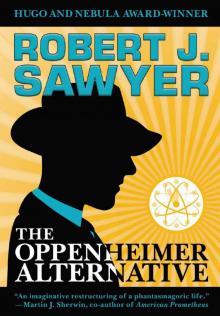 The Oppenheimer Alternative
The Oppenheimer Alternative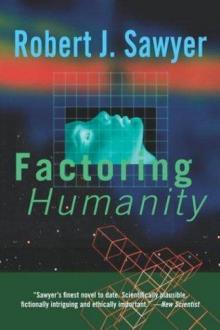 Factoring Humanity
Factoring Humanity The Shoulders of Giants
The Shoulders of Giants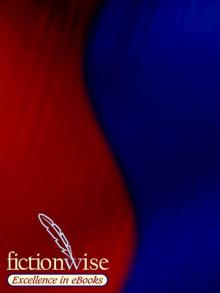 Stream of Consciousness
Stream of Consciousness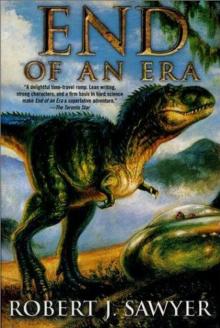 End of an Era
End of an Era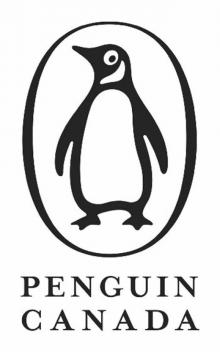 The Terminal Experiment
The Terminal Experiment Far-Seer
Far-Seer Mindscan
Mindscan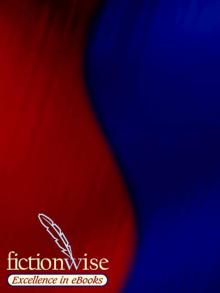 You See But You Do Not Observe
You See But You Do Not Observe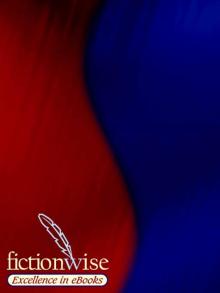 Star Light, Star Bright
Star Light, Star Bright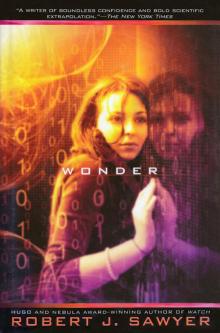 Wonder
Wonder Wiping Out
Wiping Out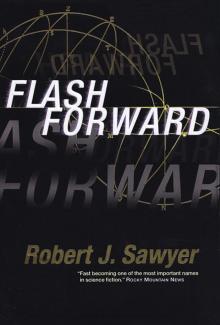 Flashforward
Flashforward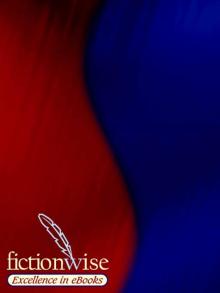 Above It All
Above It All Frameshift
Frameshift The Neanderthal Parallax, Book One - Hominids
The Neanderthal Parallax, Book One - Hominids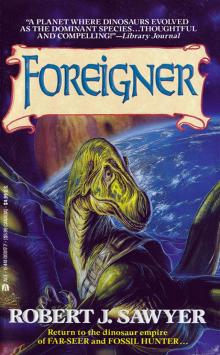 Foreigner
Foreigner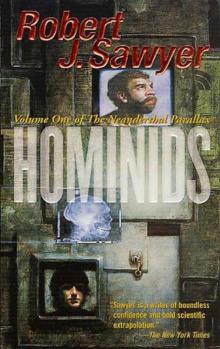 Neanderthal Parallax 1 - Hominids
Neanderthal Parallax 1 - Hominids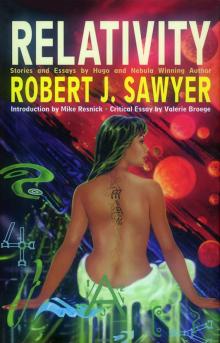 Relativity
Relativity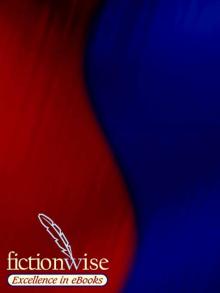 Identity Theft
Identity Theft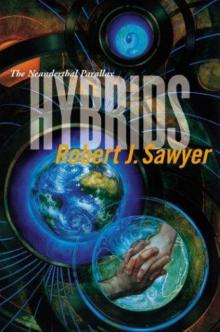 Hybrids np-3
Hybrids np-3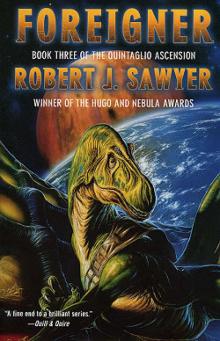 Foreigner qa-3
Foreigner qa-3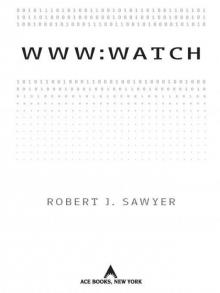 WWW: Watch
WWW: Watch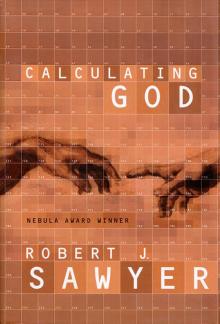 Calculating God
Calculating God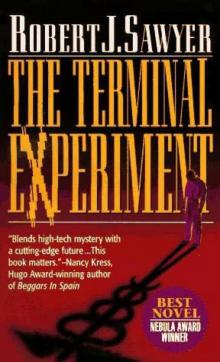 The Terminal Experiment (v5)
The Terminal Experiment (v5)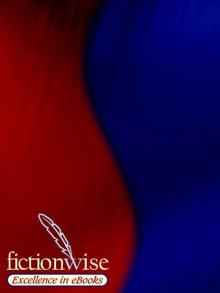 Peking Man
Peking Man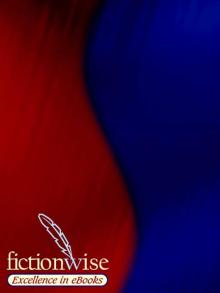 The Hand You're Dealt
The Hand You're Dealt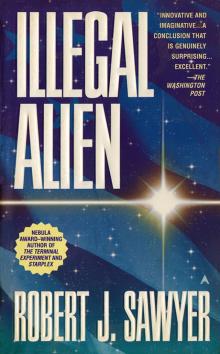 Illegal Alien
Illegal Alien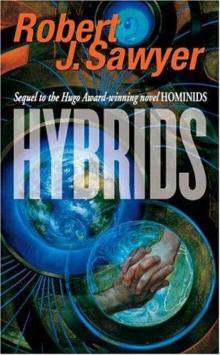 Neanderthal Parallax 3 - Hybrids
Neanderthal Parallax 3 - Hybrids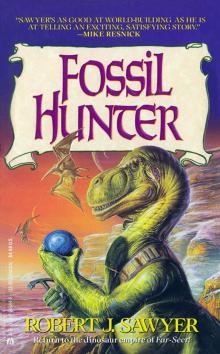 Fossil Hunter
Fossil Hunter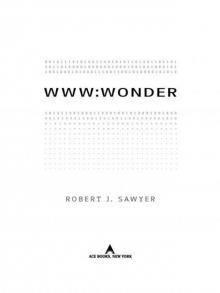 WWW: Wonder
WWW: Wonder Iterations
Iterations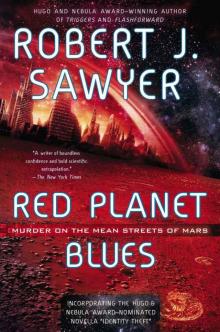 Red Planet Blues
Red Planet Blues Rollback
Rollback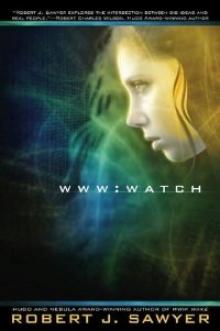 Watch w-2
Watch w-2 Gator
Gator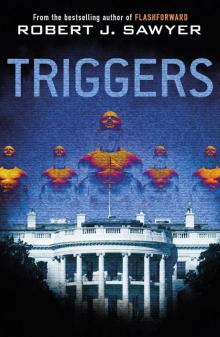 Triggers
Triggers Neanderthal Parallax 2 - Humans
Neanderthal Parallax 2 - Humans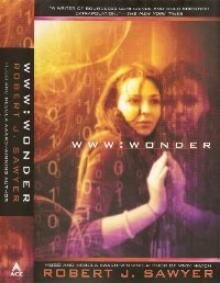 Wonder w-3
Wonder w-3 Wake
Wake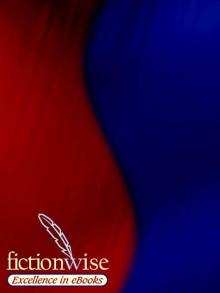 Just Like Old Times
Just Like Old Times Wake w-1
Wake w-1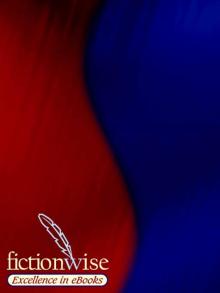 Fallen Angel
Fallen Angel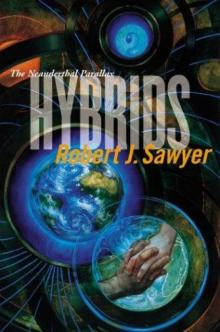 Hybrids
Hybrids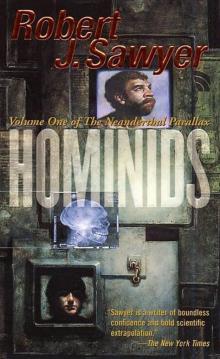 Hominids tnp-1
Hominids tnp-1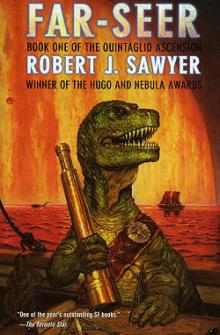 Far-Seer qa-1
Far-Seer qa-1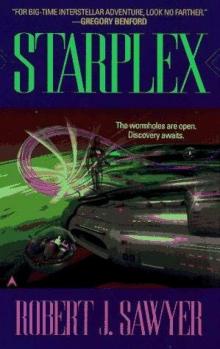 Starplex
Starplex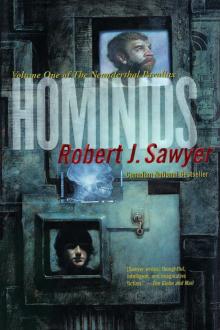 Hominids
Hominids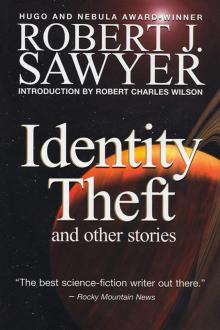 Identity Theft and Other Stories
Identity Theft and Other Stories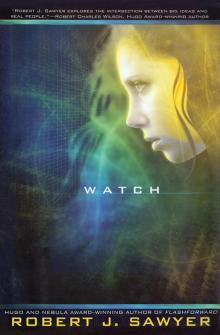 Watch
Watch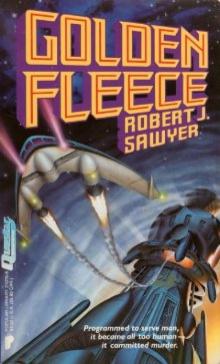 Golden Fleece
Golden Fleece Quantum Night
Quantum Night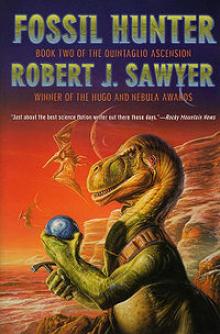 Fossil Hunter qa-2
Fossil Hunter qa-2 Humans np-2
Humans np-2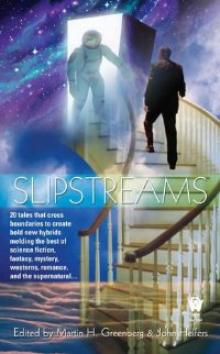 Biding Time
Biding Time